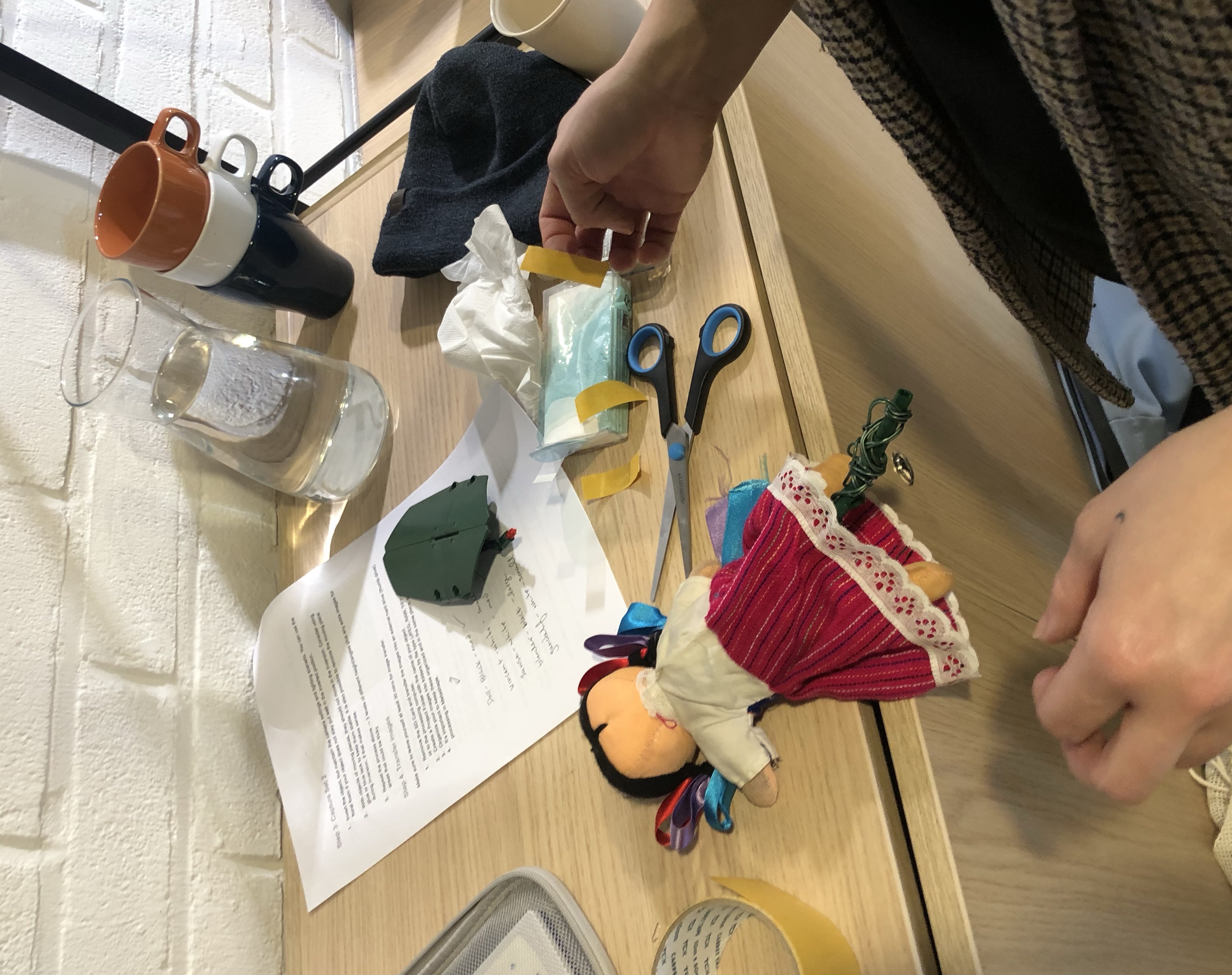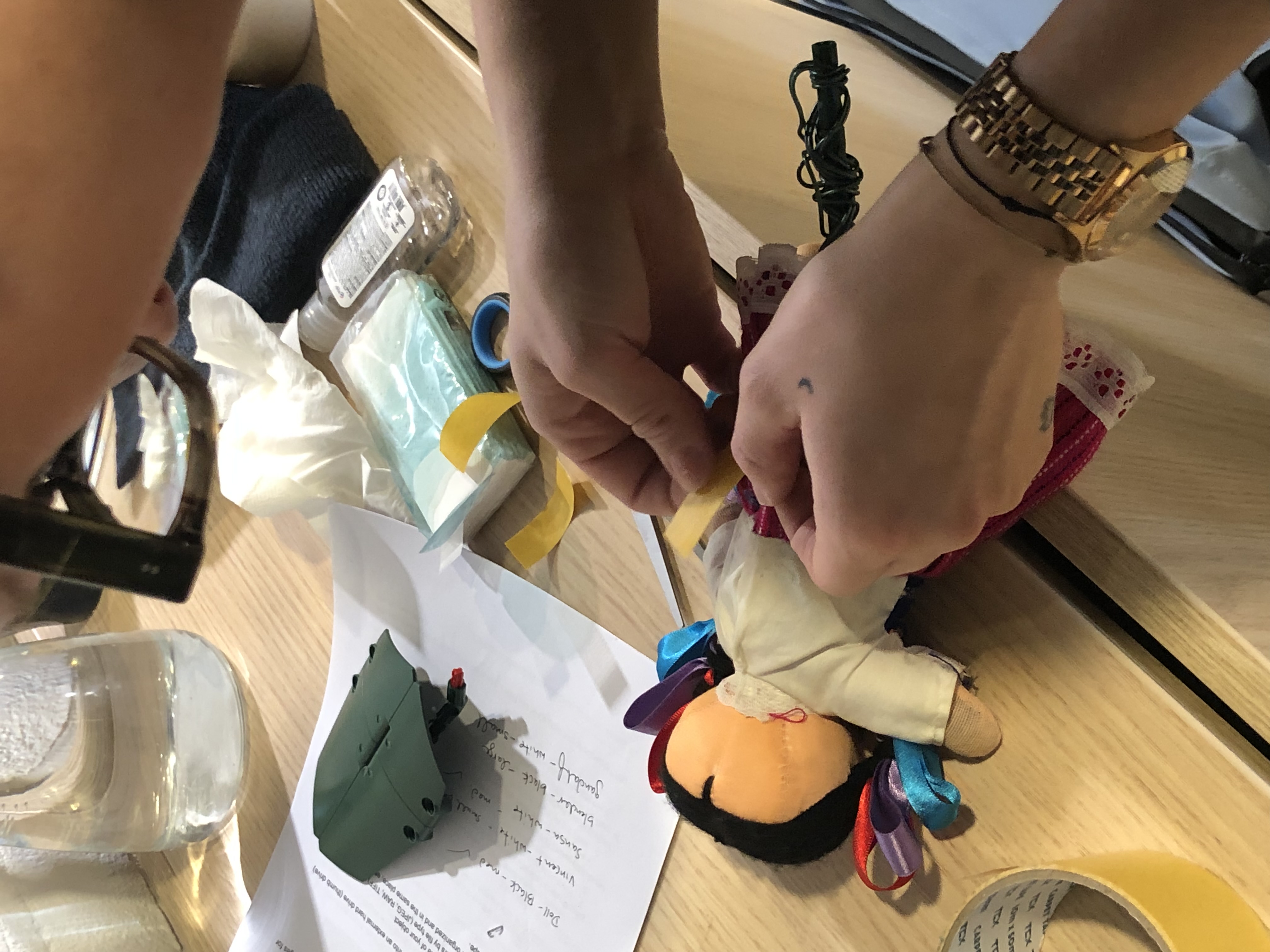

For capturing the doll we needed to decide on a position that would suit the doll and the narrative best. It was important to us that the doll would be standing, instead of seated. Positioning her standing up seemed more fitting as the doll is designed to be played and interacted with: The doll is made of movable textile and the arms can be turned to hold a certain position. As such, the doll is of a kinetic design, intended for interactive play (Van Leeuwen, 2009). We wanted to emphasise this characteristic.
To keep the doll in an upright standing position during the capturing process, we stuck chopsticks to the doll’s torso using duct tape and stuck those into a block of floral foam. Although this is visible in the images, thanks to the masking, the chopsticks and floral foam are not visible in the final model.

During the first capturing session we made the mistake of moving the doll during capturing. We propped the doll up in the light box to elevate her, so we could get better pictures from a low angle. Later, we took her off the stand so we could take the pictures from the mid and top angles. Doing so caused the software some trouble as well, as the background behind the doll was different between images.
This too, we were able to correct during the second capturing session. We made sure to have the best possible positioning for the doll for all camera angles before we started photographing. We also chose a larger light box with a larger opening and a focal length that allowed us to get closer to the object. Combined, those changes helped us to get better-quality pictures from all angles without changing the position of the doll during the shoot.
Due to how movable the doll's limbs and clothing are, we couldn't capture the doll’s underside well enough to model it. Therefore, the 3D model does not have an underside, and will simply show as invisible when looking at the doll from underneath.